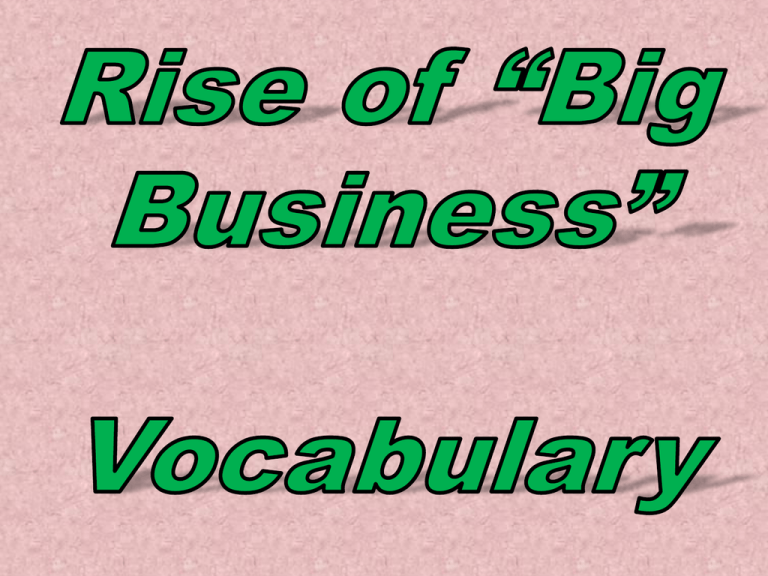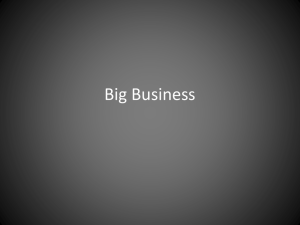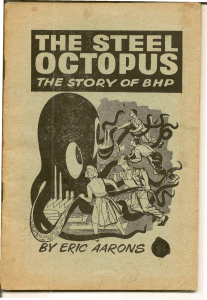Document 17613634
advertisement

1. Resources • People, goods, capital, and materials necessary to produce products or provide a service. 2. Products • Goods manufactured using natural resources. 3. Markets • Centers where products, goods, and services are sold. 4. Manufacturing • The production of goods or services by hand or machine. 5. Natural Resources •Raw materials occurring naturally (not man-made). 6. Iron Ore • The raw material needed in order to create steel. 7. Steel Mills • Manufacturing plants in which iron ore is turned into steel. 8. Textile •Fabric or cloth material. 9. Specialized Industries • Groups of businesses that focus on making or providing one particular good or service. Textile Factory Meat Packing Plant 10. Rural • Communities of low or sparse population. –Antonym: Urban 11. Agricultural Economy • An economy based in the growing and selling of cash crops for a profit. 12. John D. Rockefeller • During the Industrial Revolution, this man owned the oil refining monopoly called “Standard Oil.” 13. Andrew Carnegie • During the Industrial Revolution this man owned the steel monopoly called “Carnegie Steel,” later renamed “United States Steel.” 14. Cornelius Vanderbilt • During the Industrial Revolution, this man owned the shipping and railroads monopoly called “New York Central Railroad.” 15. Low-Cost Production • Providing a product or service at the lowest cost to the producer possible. – For example: A business can pay low wages to their employees or cut corners when it comes to the safety of the product. 16. Financial Resources • Capital or money needed to provide a product or service. 17. Monopoly • Having control of a vast majority of a single industry. 18. Philanthropy • The act of donating one’s own money to charities and the community. 19. Mechanization • The process by which manual human labor is replaced by machines. 20. Centers of Population • Areas in which large groups of people live and work near centers of industry. 21. Mail Order • This allowed people to purchase goods and products through the mail that might not be available in their location. Sears, Roebuck Barn Mail Order Barn Chicago monolith Sears, Roebuck & Company was truly the farm family's friend, offering everything from girdles to guitars, baby chicks to barns through its voluminous mail-order catalog-which itself then served double-duty in the outhouse. These Sears barn kits included do-it yourself plans, doors, glass windows, and pre-cut fir, hemlock, and cypress boards that were numbered to aid easy assembly. As this ad proclaimed, "Just as the sickle has been replaced successively by the cradle, the self rake and the binder, so the old time, wasteful, not ready cut system of construction is being replaced by our modern and economical 'Honor Bilt' Already Cut buildings." Analyzing Political Cartoons • • • • • • • O is for Overview. Conduct a brief overview of the main subject of the visual. P is for Parts. Scrutinize the parts of the visual. Note any elements or details that seem important. T is for Title. Read the title or caption of the visual (if present) for added information. I is for Interrelationships. Use the words in the title or caption and the individual parts of the visual to determine connections and relationships within the graphic. C is for Conclusion. Draw a conclusion about the meaning of the visual as a whole. Summarize the message in one or two sentences. “Standardoiloctopus” "The Bosses of the Senate" "King Rockefeller"

